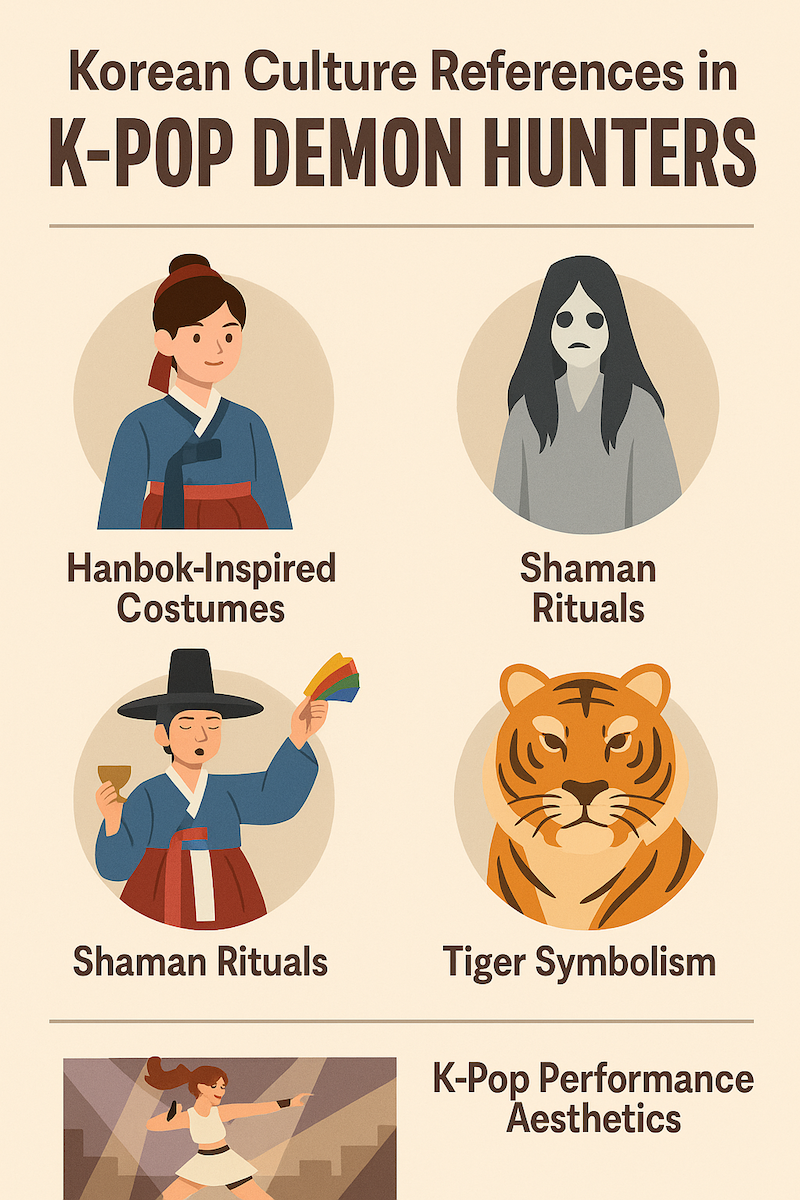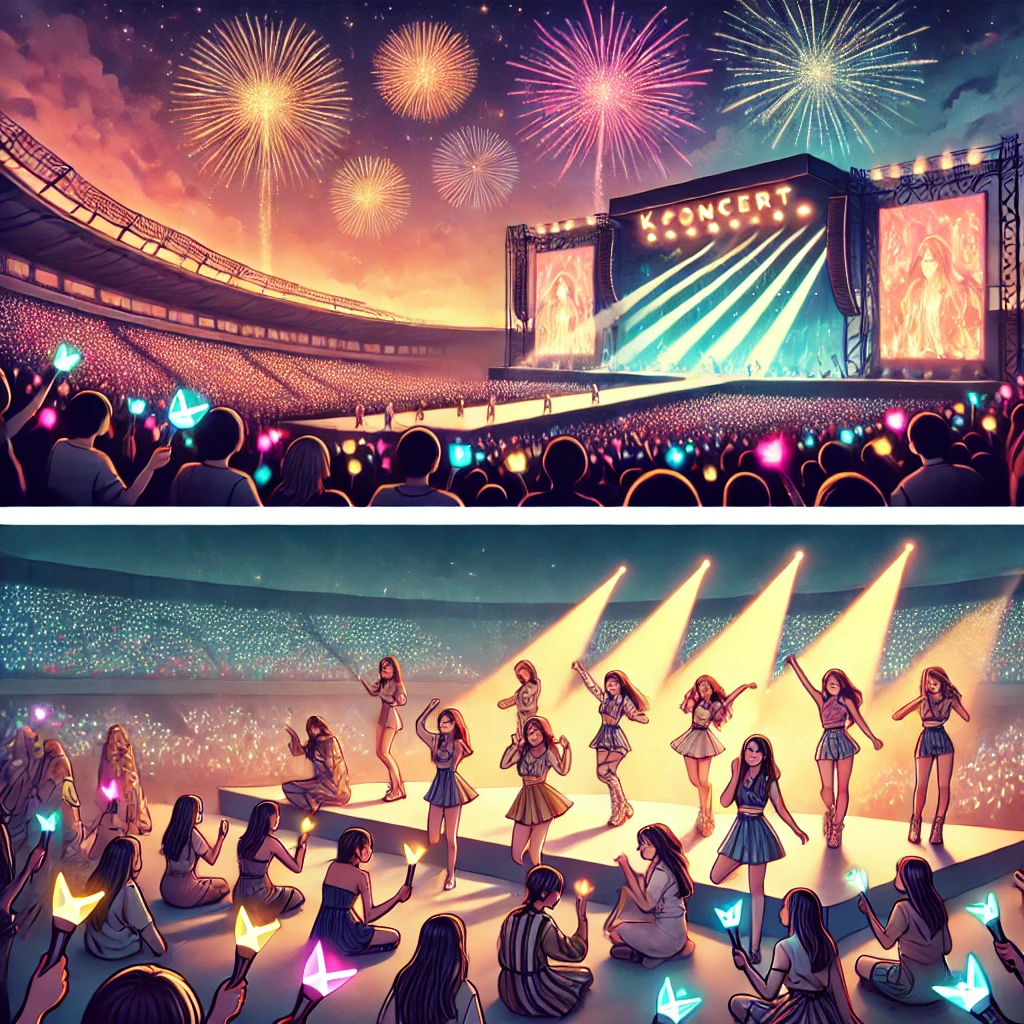When most foreigners think about Korean music, K-pop is the first thing that comes to mind. BTS, BLACKPINK, NewJeans — these global superstars dominate international charts and shape the way the world sees Korean culture.
But if you spend more time in Korea, you’ll discover a much richer and more diverse music scene that changes depending on age group, lifestyle, and even regional preferences.
In this article, we’ll explore Korean popular music by generation — from the energetic world of K-pop for teens and young adults to the nostalgic charm of trot music loved by older audiences, and even the unique TV and YouTube cover culture that connects all ages.
1. Teenagers and Young Adults: The Kingdom of K-pop
K-pop is not just music — it’s a full cultural package with fashion, dance, fan events, and online communities. For people under 30 in Korea, K-pop is the dominant genre.
- Idol Groups and Solo Artists: Teens follow groups like BTS, BLACKPINK, Stray Kids, NewJeans, and Aespa. Each group has a dedicated fanbase (fandom) with official light sticks, fan chants, and synchronized support during concerts.
- Dance Challenges: Platforms like TikTok and Instagram Reels are full of K-pop dance challenges. Even casual listeners join in to learn the catchy choreography.
- Fan Culture: Buying albums, streaming songs repeatedly, attending fan sign events — it’s all part of the lifestyle.
Foreigners visiting Korea will notice K-pop everywhere: in cafés, clothing stores, even on public transportation ads.
2. Adults in Their 30s and 40s: Nostalgia Meets Modern Trends
For Koreans in their 30s and 40s, K-pop is still popular, but there’s a strong pull towards nostalgia.
- 1990s–2000s Icons: Groups like g.o.d, Shinhwa, and BoA shaped their youth. Reunion concerts or remastered tracks bring huge excitement.
- Ballads and OSTs: Many in this age group enjoy ballads from singers like Sung Si-kyung, Baek Ji-young, or drama soundtrack hits. Korean drama OSTs have a special emotional connection — think of “My Destiny” from My Love from the Star.
- Blending Old and New: Some adults follow newer K-pop acts introduced by their children, creating a cross-generational music bond.
3. Middle-aged and Older Generations: The Love for Trot
Trot (트로트) is Korea’s oldest form of pop music, with roots going back to the early 20th century.
It’s characterized by a distinct rhythm, emotional delivery, and repetitive melodic patterns.
- Why It’s Popular: Older Koreans often prefer trot because of its storytelling and familiar style. Songs often deal with love, life struggles, and personal pride.
- Modern Trot Boom: Shows like Mr. Trot and Miss Trot have revived interest in the genre, attracting not only older audiences but also younger listeners curious about Korea’s musical heritage.
- Famous Names: Jang Yoon-jung, Lim Young-woong, and Song Ga-in are household names in the trot world.
Interestingly, trot concerts can fill massive arenas — a reminder that K-pop isn’t the only genre commanding large audiences.
4. TV Music Shows: Cover Performances and Surprises
Korean television has a unique approach to music entertainment — it’s not only about promoting new songs, but also about reinventing classics.
- King of Mask Singer (복면가왕): Contestants wear elaborate masks to hide their identities and are judged purely on vocal performance. Often, celebrities surprise viewers with their singing ability, creating viral moments.
- Immortal Songs (불후의 명곡): Popular singers reinterpret legendary hits from past decades, giving older songs a modern twist.
- I Can See Your Voice: Blends guessing games with unexpected performances — sometimes the “mystery singer” turns out to be incredibly talented.
These shows often trend on YouTube, making it easy for international audiences to enjoy subtitled clips.
5. YouTube Cover Culture
Like in many countries, Korea has a thriving YouTube music cover scene.
- Idol Covers: K-pop idols cover each other’s songs, often switching concepts (e.g., a boy group covering a girl group’s dance track).
- Independent Creators: Musicians upload acoustic or piano covers of hit songs, sometimes gaining massive followings.
- Global Collaborations: Korean singers collaborate with international artists for online duets.
For foreigners, this means you can enjoy Korean music beyond official releases — often with fresh interpretations.
6. Why K-pop Still Reigns Supreme
Even with all this variety, K-pop is still the most dominant force in Korean music — both domestically and internationally. Why?
- Industry Power: Large entertainment companies like HYBE, SM, JYP, and YG invest heavily in production, marketing, and global tours.
- Fan Engagement: Social media keeps fans connected to idols 24/7.
- Cultural Influence: K-pop shapes fashion, language, and even beauty trends in Korea.
Still, what makes Korean music culture special is that it allows multiple genres to coexist — you can go from BTS to a trot ballad to a 1980s rock hit in the same playlist.
Final Thoughts
Korean popular music is multi-layered. K-pop may be the face of Korean music abroad, but within Korea, people’s listening habits shift with age, nostalgia, and cultural traditions. From the energetic dance beats loved by teens to the heartfelt trot ballads cherished by older audiences, music in Korea tells the story of a society that values both innovation and heritage.
For any foreigner in Korea, exploring music beyond K-pop is a way to connect with locals across generations — so next time, try listening to a trot classic, watch a “King of Mask Singer” episode, or search for Korean YouTube covers.
You might just discover a new favorite.

